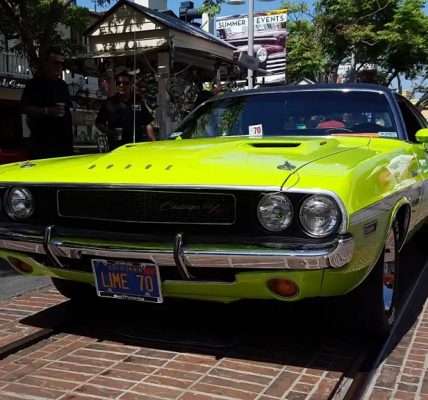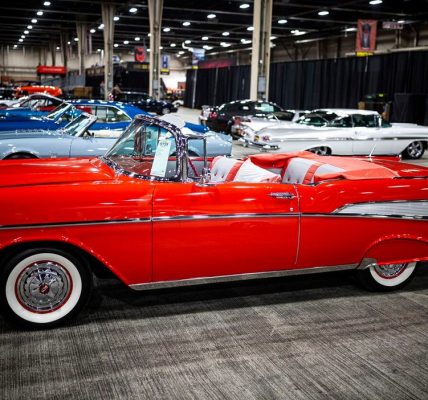Have you ever seen photos of Cuba and wondered why there are so many vintage cars on the streets? It’s a common sight in this Caribbean island nation, where classic American cars from the 1950s and earlier still roam the roads. But have you ever stopped to think about why this is the case?
In this article, we’ll delve into the history behind Cuba’s abundance of vintage cars and explore the cultural significance they hold for the country.
The Revolution and Trade Embargo
To understand why Cuba has such a high number of vintage cars, we have to go back in time to 1959 when Fidel Castro came into power through the Cuban Revolution. The new government imposed strict trade regulations that made it difficult for Cubans to import new cars from the United States and other countries.
Then, in 1962, the United States imposed a trade embargo on Cuba, making it nearly impossible for Cubans to obtain new vehicles. This meant that the cars already present in Cuba at the time of the revolution were essentially frozen in time.
Popular Vintage Cars in Cuba
The most common vintage cars you’ll see on the streets of Cuba are American-made models from the 1940s and 1950s. These include famous brands like Chevrolet, Ford, Buick, and Cadillac.
But it’s not just American cars that dominate the roads. You’ll also spot Soviet-era Ladas and Moskvichs from Russia, as well as European cars from brands like Fiat, Peugeot, and Renault.
The Resilience of Cuban Mechanics
Despite not having access to new cars or replacement parts, the Cuban people refused to let their beloved vehicles go to waste. With limited resources and an abundance of ingenuity, they became masters at repairing and maintaining their vintage cars.
Cuban mechanics would often have to get creative with their repairs, using whatever materials they could find to keep the cars running. Some even resorted to making their own parts from scratch. This level of resourcefulness and resilience has allowed the vintage cars to continue operating for decades, becoming a symbol of the Cuban people’s determination and ingenuity.
Cultural Significance
The vintage cars of Cuba have come to represent more than just a mode of transportation. They have become an integral part of Cuban culture, reflecting both the country’s past and its present.
For many Cubans, these cars hold sentimental value as they have been passed down through generations. They are often seen as family heirlooms that carry memories and stories of the past. In a country where owning a car is still considered a luxury, these vintage cars serve as a source of pride for their owners.
Tourism Boom
In recent years, Cuba has experienced a significant increase in tourism, with many visitors flocking to the island to catch a glimpse of these iconic vintage cars. In response to the growing demand, some Cubans have turned their vintage cars into taxis or tour vehicles, offering visitors a unique and nostalgic experience.
Preservation Efforts
Recognizing the cultural significance and economic potential of these vintage cars, the Cuban government has taken steps to preserve them. In 2014, the Cuban government lifted the ban on car imports for citizens, but with strict regulations and high taxes, making it difficult for many to afford new cars.
This decision has helped protect the vintage cars from being replaced by newer models and has also led to an increase in restoration efforts. The Cuban government even launched a program in 2019 to provide training and resources to Cuban mechanics, ensuring the continuation of their skills in preserving these cars.
The Future of Vintage Cars in Cuba
With the recent changes in trade and relations with the United States, it’s uncertain how long these vintage cars will continue to dominate the streets of Cuba. While some may see this as a sign of progress, for many Cubans, these cars hold a special place in their hearts and are seen as an essential part of their identity.
FAQs
Are all the vintage cars in Cuba American-made?
No, while most of the vintage cars in Cuba are American-made from the 1950s and earlier, there are also some European models present on the island.
Are all the vintage cars in Cuba in good condition?
Not necessarily. While some have been well-maintained and restored, others are barely holding on due to a lack of resources and access to proper replacement parts.
How do Cubans source parts for their vintage cars?
Many Cuban mechanics rely on sourcing parts from other old vehicles, importing them from other countries, or making them from scratch.
Can visitors ride in the vintage cars as taxis?
Yes, tourists can hire these vintage cars for rides around Cuba, offering a unique and memorable experience.
Do all Cubans own a vintage car?
No, owning a car is still considered a luxury in Cuba, and not all Cubans have the means to own a vintage car. Instead, many rely on other forms of transportation such as bicycles or public transportation.
Conclusion
The abundance of vintage cars on the streets of Cuba is a unique and fascinating aspect of the country’s culture. These classic vehicles not only represent a time capsule of Cuba’s past, but they also embody the resilience and ingenuity of its people. As Cuba continues to evolve and modernize, it will be interesting to see how these iconic vintage cars fit into its future. So, if you ever have the chance to visit Cuba, make sure to take a ride in one of these vintage cars and experience a piece of history first-hand. Who knows? You may even hear some interesting stories from your driver along the way.






